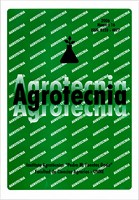Effect of deferred and use time on yield and quality of Megathyrsus maximus cv. Gatton panic, in semi-arid Chaco
DOI:
https://doi.org/10.30972/agr.0336896Keywords:
Deferred forage, Gatton panic, yield, nutritional qualityAbstract
In semi-arid Chaco, there are areas that present limitations on fodder stocks. In these situations, deferred forage is the main strategy to overcome the forage deficit. The aim of this work was to evaluate the effect of deferred and use time of Megathyrsus maximus cv. Gatton panic on yield and nutritional quality. Three deferred times (February, March and April) and two use times (June and August) were evaluated. Dry matter partitioning was determined by separating leaves and stems. Through laboratory analysis, forage quality parameters such as crude protein (CP), neutral detergent fiber (NDF) and acid detergent fiber (ADF) were evaluated, besides dry matter digestibility (DMD) and metabolizable energy (ME) were calculated. The highest forage yield was recorded in February, although more advanced phenological development was observed, increasing NDF and FDA, and decreasing the ratio leaf/steam and the percentage of CP. There were no differences in yield between time of use, although there were differences in the percentage of CP, which was higher in June. There were also no differences for digestibility and metabolizable energy between deferred and use time.



